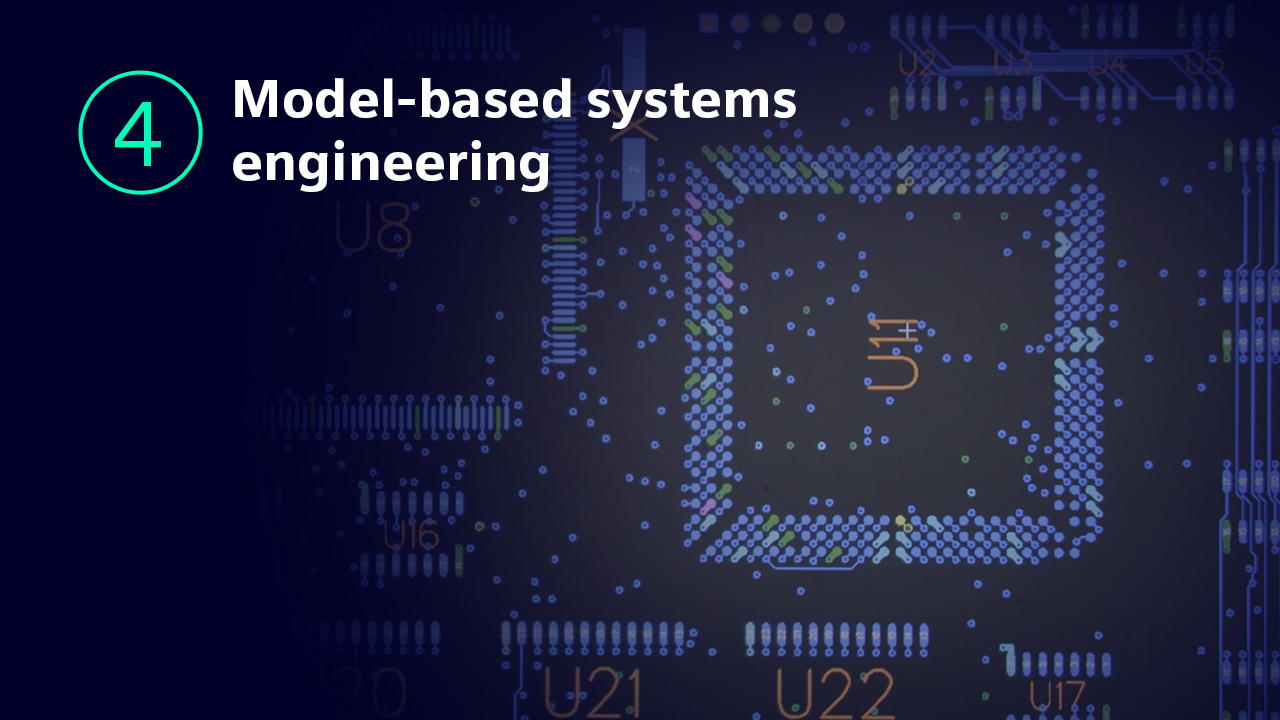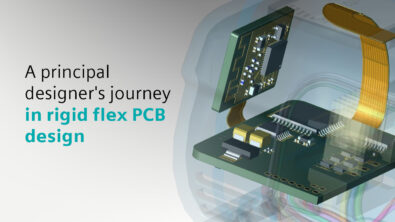PCB design best practices pillar 4: model-based systems engineering

Today I will outline our fourth pillar of PCB design best practices, model-based systems engineering.
Having the ability to design and verify an entire system in the virtual world prior to fabrication increases your potential for downstream success. With modern tools and technology, we can:
- Integrate requirements through manufacturing and across multiple domains
- Decompose across multiple domains
- Analyze system tradeoffs
- Access traceability across requirements
- Verify and optimize system design
There are a few PCB design best practices that fall under this pillar.
Multi-board design
Implementing model-based systems engineering for cross system optimization options regarding size and performance is the best practice when it comes to multi-board design. You remove siloed engineering teams and can achieve system level integration and analysis, a digital twin, tightly integrated collaboration, cross system optimization and reduced potential for errors, reschedules, respins and cost.
Electrical/electronic co-design
A system level integration of electrical/electronic design domains would produce a digital twin and ensure tightly integrated collaboration. It also removes the potential for errors downstream.
FPGA/PCB co-design
FPGA design methodology is inefficient in its ability to optimize FPGA pinout configurations. The best practice is to use the FPGA PCB integration to configure the FPGA pin out routing optimization and to enable FPGA pin swapping capability. This may reduce design cycle time and optimize FPGA PCB integration as well as reduce or prevent EMI or SI issues.
IC Packaging/PCB co-design
Using a model-based systems engineering to optimize the system I/O and to enable a digital twin ensures that you’re considering all the fabrics to include IC packaging and PCB simultaneously. You’re going to optimize the I/O. You’re going to help reduce the design cycle time and optimize the design efficiency. You’re also going to reduce the potential for EMI issues or signal integrity issues. You’re going to have tightly integrated collaboration as well as you’re going to remove potential for errors and respins and reduce cost.
Model-based systems engineering
In conclusion, model-based systems engineering is the vehicle to tighter integration between disparate domains and helps to streamline the overall design process.
As we continue along in this series, we will zero in on each best practice mentioned within this pillar and provide examples of how to implement them, address challenges and overcome roadblocks.
Thanks for following along and make sure to tune into our LinkedIn live session on model-based systems engineering.


